Falling Objects into Water Simulation, Dynamic Mesh, ANSYS Fluent Training
$160.00 Student Discount
- The problem numerically simulates the Falling Objects into Water using ANSYS Fluent software.
- We design the 2-D model by the Design Modeler software.
- We Mesh the model by ANSYS Meshing software, and the element number equals 8727.
- We perform this simulation as unsteady (Transient).
- We use Dynamic Mesh to apply mesh changes over time.
- We use a UDF is used to define cubes’ motion toward the water surface.
- We use the VOF Multi-Phase model to define water and air.
Click on Add To Cart and obtain the Geometry file, Mesh file, and a Comprehensive ANSYS Fluent Training Video.
To Order Your Project or benefit from a CFD consultation, contact our experts via email ([email protected]), online support tab, or WhatsApp at +44 7443 197273.
There are some Free Products to check our service quality.
If you want the training video in another language instead of English, ask it via [email protected] after you buy the product.
Description
Description
In this project, the fluid flow around two cubes falling into the water by the dynamic mesh method is simulated by ANSYS Fluent software. We perform this CFD project and investigate it by CFD analysis.
The present model is designed in two dimensions using Design Modeler software. Two cubes are placed inside a square domain and are supposed to fall into the fluid due to gravity acceleration.
The meshing of the model has been done using ANSYS Meshing software. Moreover, the element number is 8727.
Also, the transient solver has been enabled due to the dynamic mesh option.
Falling Objects Methodology
In problems where the location and shape of mesh cells change, it is mandatory to use the dynamic mesh model to prevent the extreme deterioration of elements’ quality.
Smoothing and remeshing methods create higher-quality elements when the previous ones may cause errors and are no longer useful to perform calculations with.
Two cubes are initially assumed to be kept still in the air, and when the simulation process starts, they will fall to collide with the free surface of water and air. As mentioned, the VOF Multiphase model option can simulate the two phases of water and air.
Furthermore, a UDF is used to impose cubes’ motion toward the water surface based on gravitational acceleration. Finally, the standard k-epsilon model is used to solve the turbulent fluid equations.
Falling Objects Conclusion
At the end of the solution process, two-dimensional contours related to the velocity, pressure, turbulent viscosity, and streamlines inside the computational domain are obtained.
As can be seen from the contours, due to the cubes’ movement and the sloshing phenomenon, the pressure along the cubes’ movement length has increased.
The pressure in the sharp corner of the tank and the cubes has its maximum value and a minimum value in the cubes’ vertical lengths (due to the separation of the flow because of the cubes’ movement in the fluid).
The kinetic energy contour also shows that the average kinetic energy due to vortices (vortices formed due to cubes’ movement in the fluid) around the cubes is higher than in other areas. The cubes’ movement has led to more turbulence in the flow and the formation of vortices.
We can easily see the wake areas in streamlines and vectors.
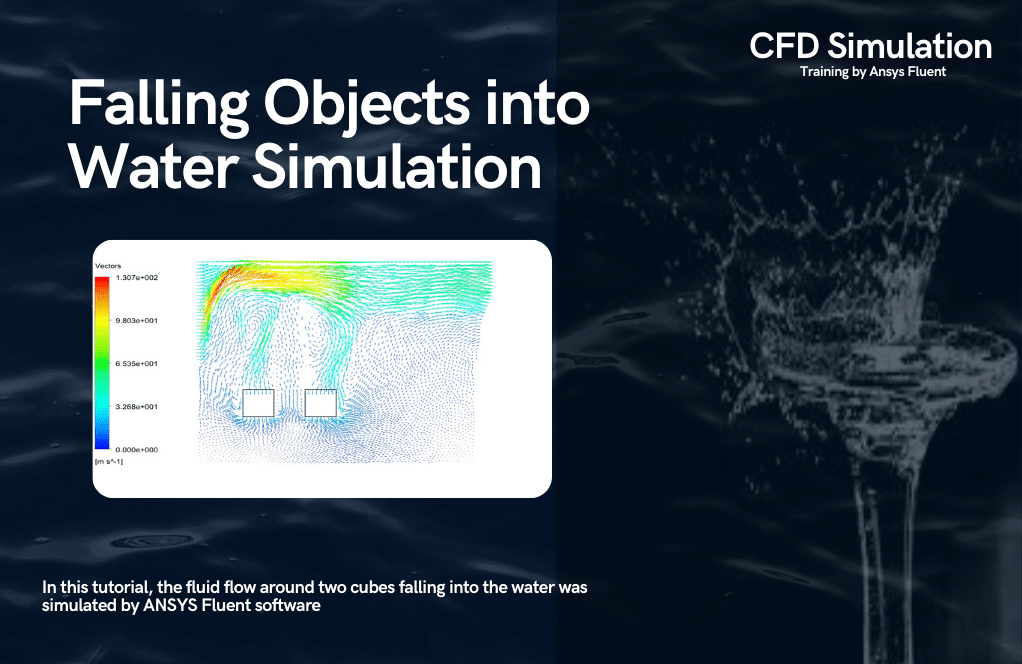
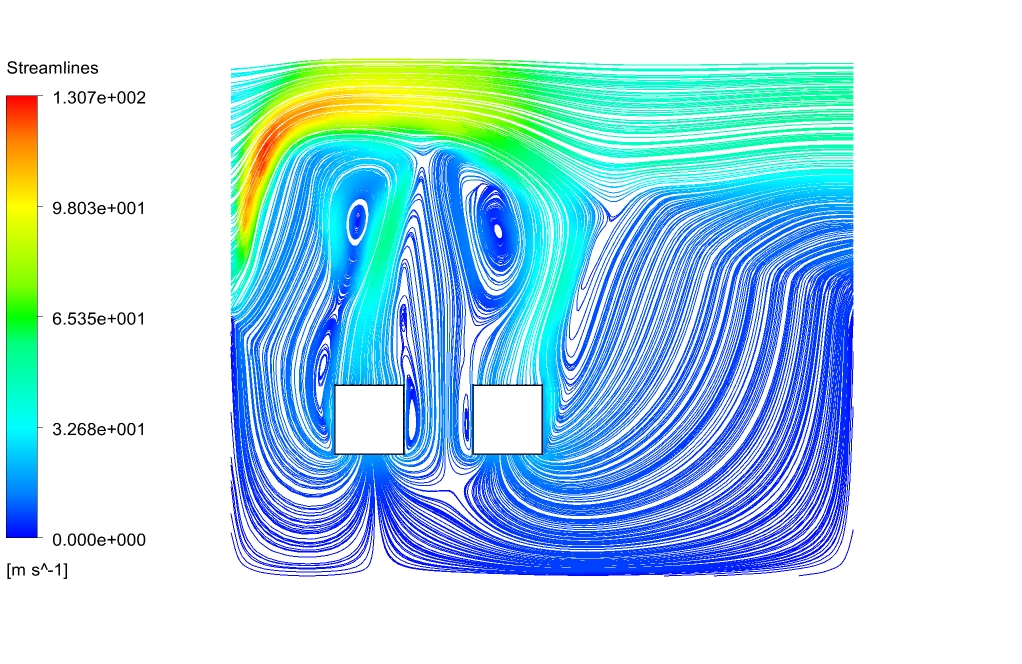
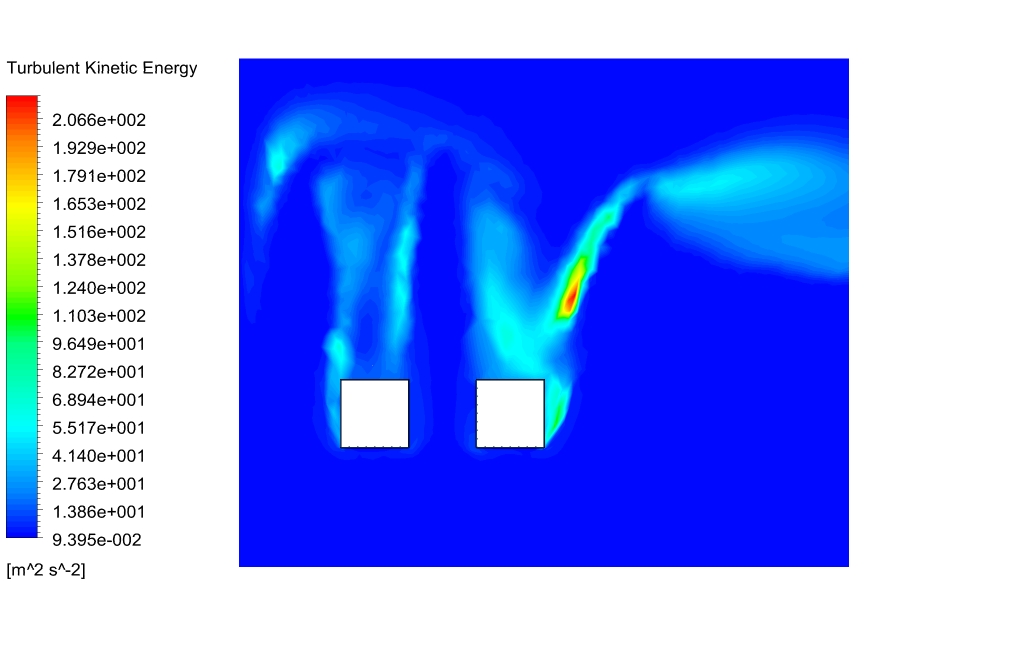
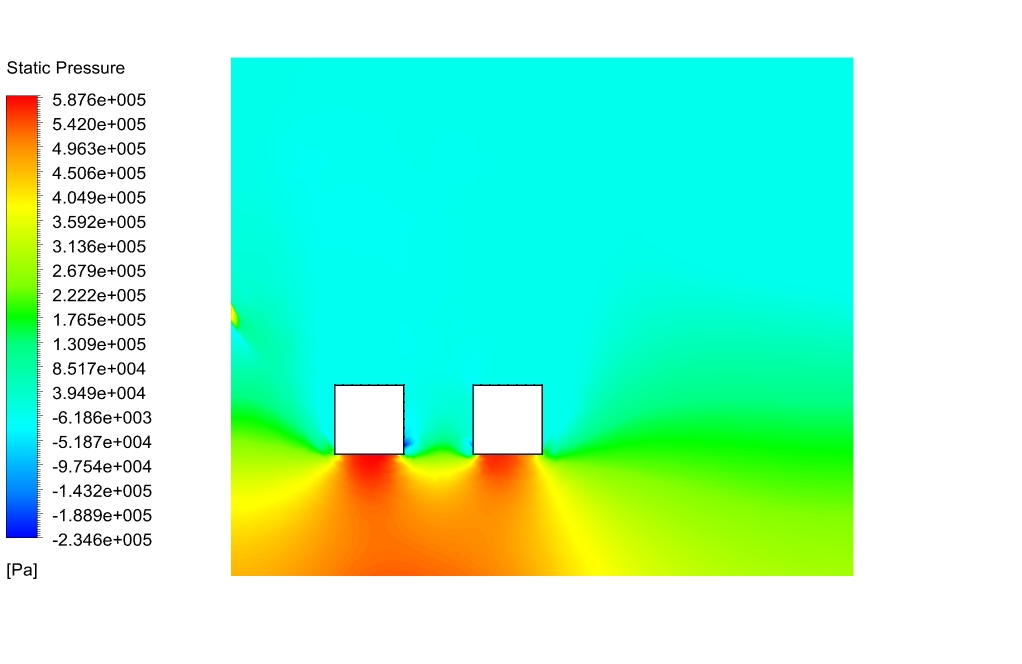
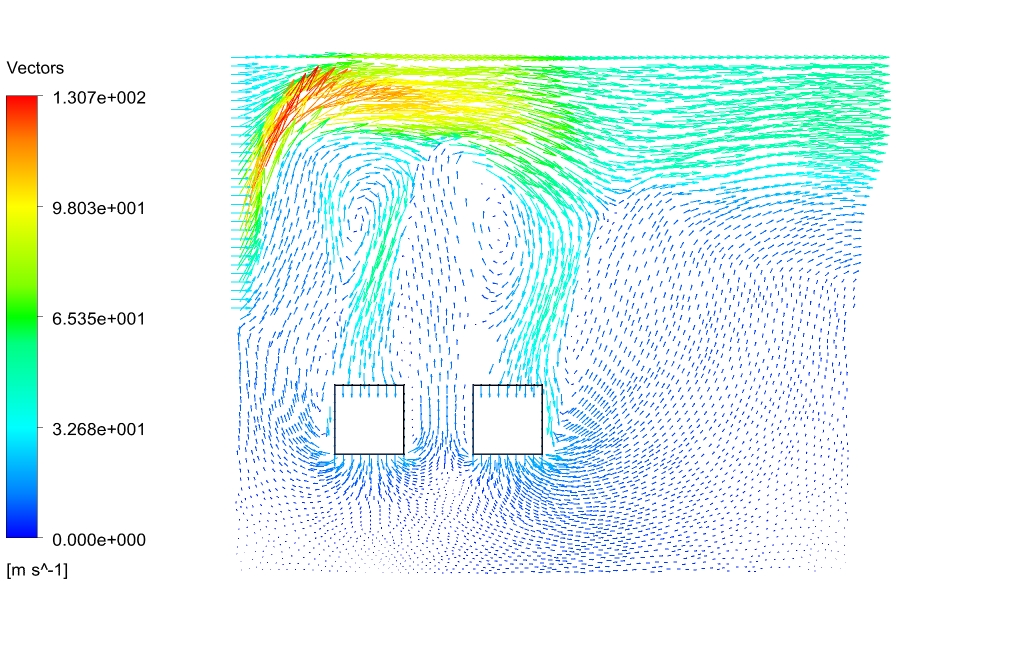
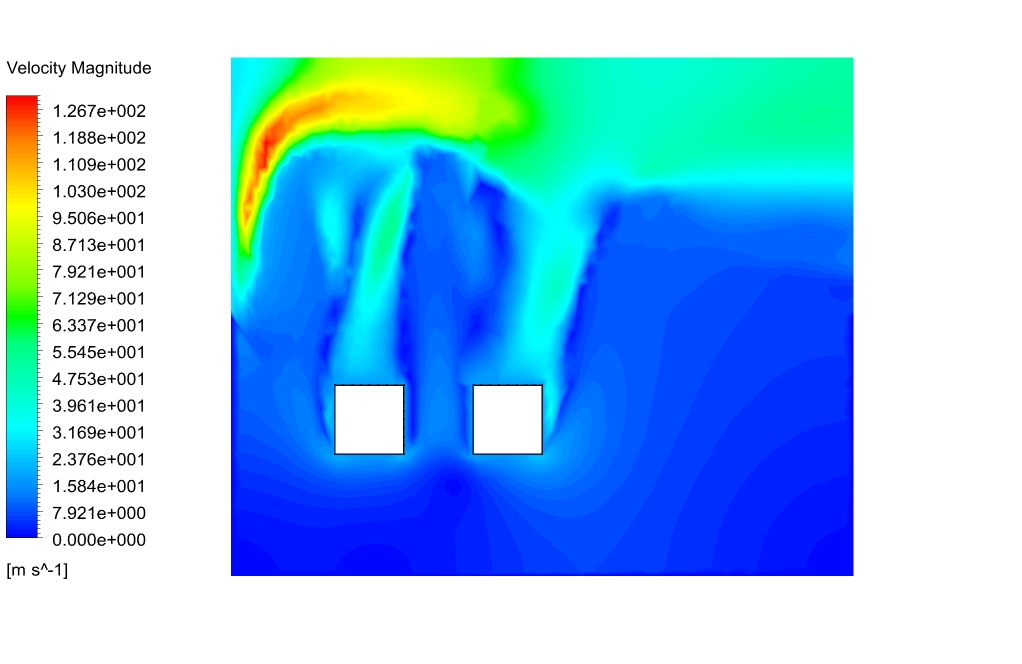

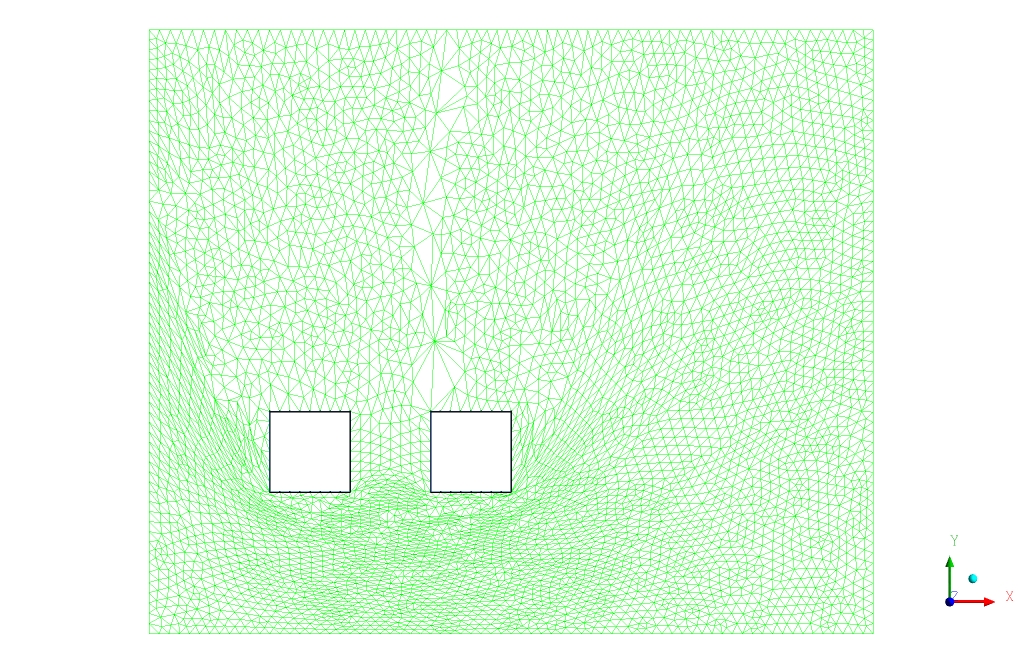
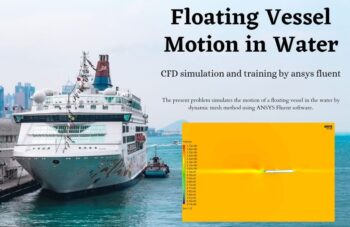

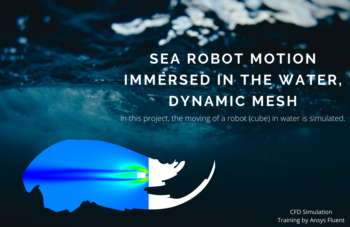

Gregg Gulgowski –
Can the simulation model the effect of different water depths?
MR CFD Support –
Yes, the simulation can model the effect of different water depths. We can adjust the water depth based on your specific requirements.
Ken Romaguera II –
I really appreciated the detailed explanation on how dynamic meshes were implemented for these falling objects. It made envisioning the actual simulation much more tangible for me.
MR CFD Support –
Thank you for your kind words! We’re thrilled to hear that the detailed explanation helped you understand the dynamic mesh implementation better. If you have any more questions or need further details on our simulations, feel free to ask. We’re here to help!
Christy Nitzsche –
The simulation captures the complexity of falling objects into water perfectly. The detailed methodology shows the dedication of MR CFD in providing realistic and precise analysis, and the conclusions demonstrate the effectiveness of using dynamic mesh and multiphase models in capturing the key phenomena like pressure variation and turbulent flow induced by the objects.
MR CFD Support –
Thank you for your positive review! We’re truly glad to hear that our efforts in delivering an accurate and comprehensive simulation of falling objects into water have been acknowledged. It’s heartening to receive such appreciation and to know that the detailed aspects of our methodology were both effective and informative for you.
Jaycee Howe –
The training was fantastic! The step-by-step process of setting up the dynamic mesh and VOF model really helped me understand multiphase flow simulation. Well-explained UDFs for emulating gravitational effects on the cubes too. Excited to apply these techniques on my projects!
MR CFD Support –
Thank you for your positive feedback! We’re thrilled to hear that the training was helpful and you could clearly understand the simulation setup for multiphase flows with dynamic meshes. We can’t wait to see how you apply these techniques to your own projects. If you have any more questions or need further assistance, please don’t hesitate to reach out. Good luck with your future simulations!
Mckayla Gislason –
Can the simulation model different shapes and sizes of falling objects?
MR CFD Support –
Absolutely! The simulation can be adjusted to model different shapes and sizes of falling objects. We can modify the geometry based on your specific requirements.
Emie Koss –
I’m impressed with the detail in the simulation of falling objects into water. Could you please clarify if the study also analyzes the effect of different water temperatures, or is it solely focused on the movement and force interactions?
MR CFD Support –
Thank you for your kind words! The simulation primarily focuses on the movement of the falling objects and the fluid-structure interactions, including force impacts, wave formation, and turbulence effects when the cubes collide with the water surface. The effect of different water temperatures is not explicitly analyzed in this study; it centers on the dynamic mesh movement and VOF Multiphase model to capture the motion and behavior of the air and water phases in the vicinity of the falling cubes. Should you wish to consider water temperature variations, additional thermal analysis could be incorporated into the setup.
Robbie Stoltenberg –
How does the simulation handle the turbulence generated by the falling object?
MR CFD Support –
The simulation uses turbulence models, such as the k-epsilon or k-omega model, to accurately capture the turbulence generated by the falling object.
Ms. Kasey Senger IV –
The dynamic simulation of falling objects into water sounds fascinating. I would like to know if different densities of the cubes were considered in the simulation to see how it affects their falling behavior?
MR CFD Support –
No, the current simulation assumes that both cubes have the same properties including identical densities. The primary focus is on examining the fluid dynamics and interaction as the cubes, presumed to have uniform density, fall into the water due to gravitational forces.
Garland Tromp PhD –
I loved seeing the dynamic interactions of the objects with the water during the simulation! Great visualization in these contour outputs.
MR CFD Support –
Thank you for your positive feedback! We’re elated to hear that you enjoyed the simulation and found the visualizations of the dynamic interactions beneficial. If you have any further questions or need more information about our simulations, please feel free to reach out.